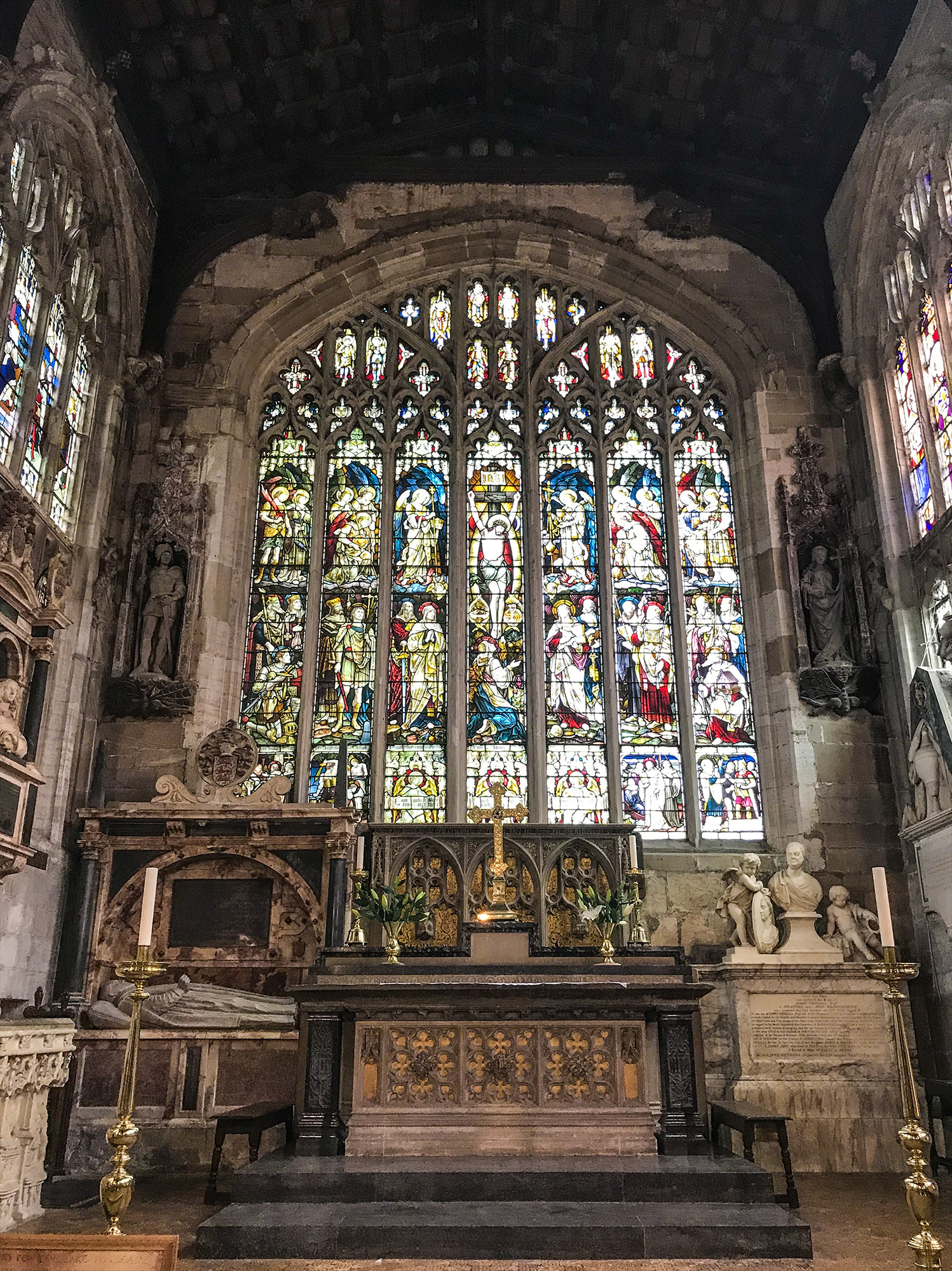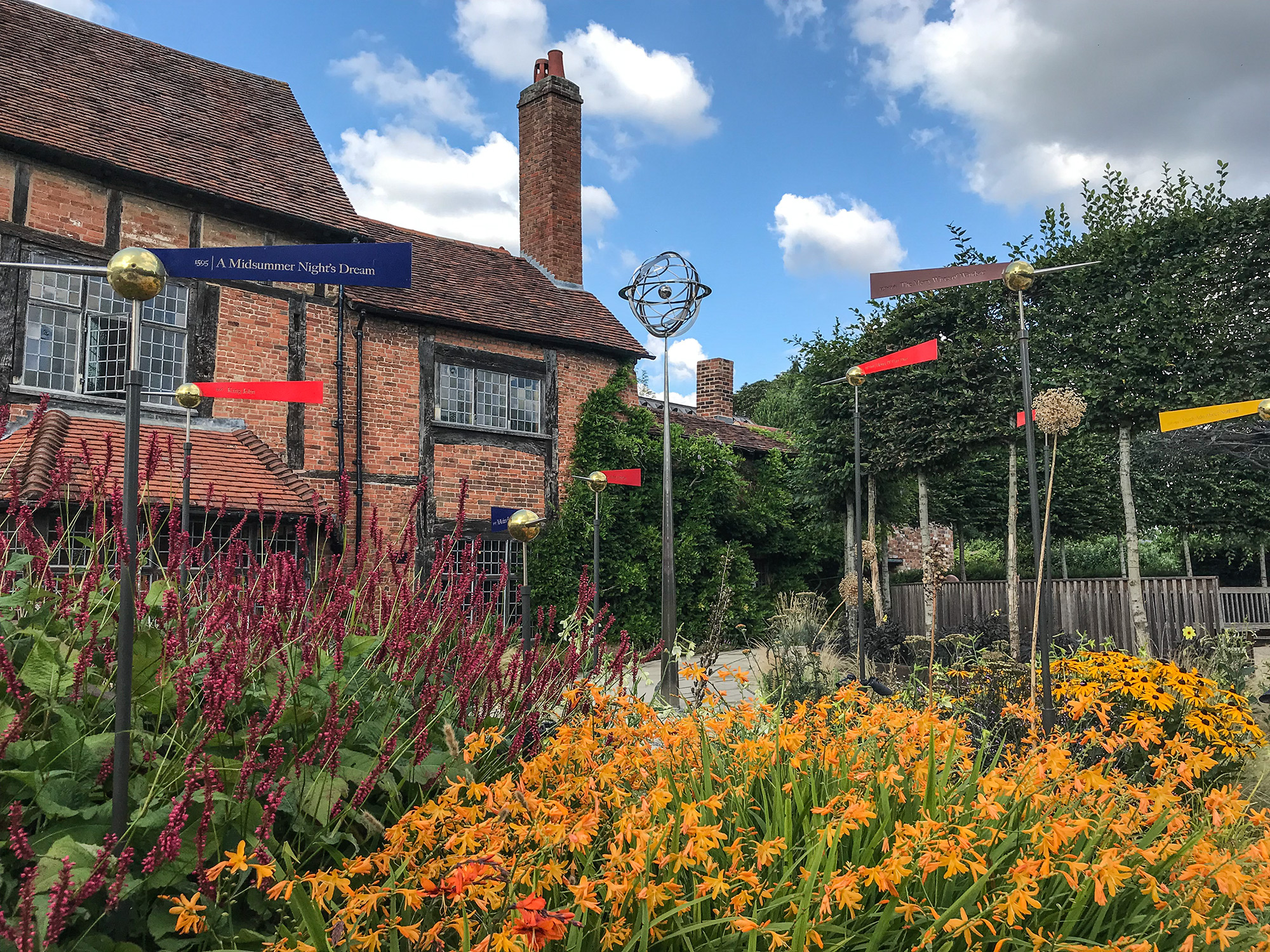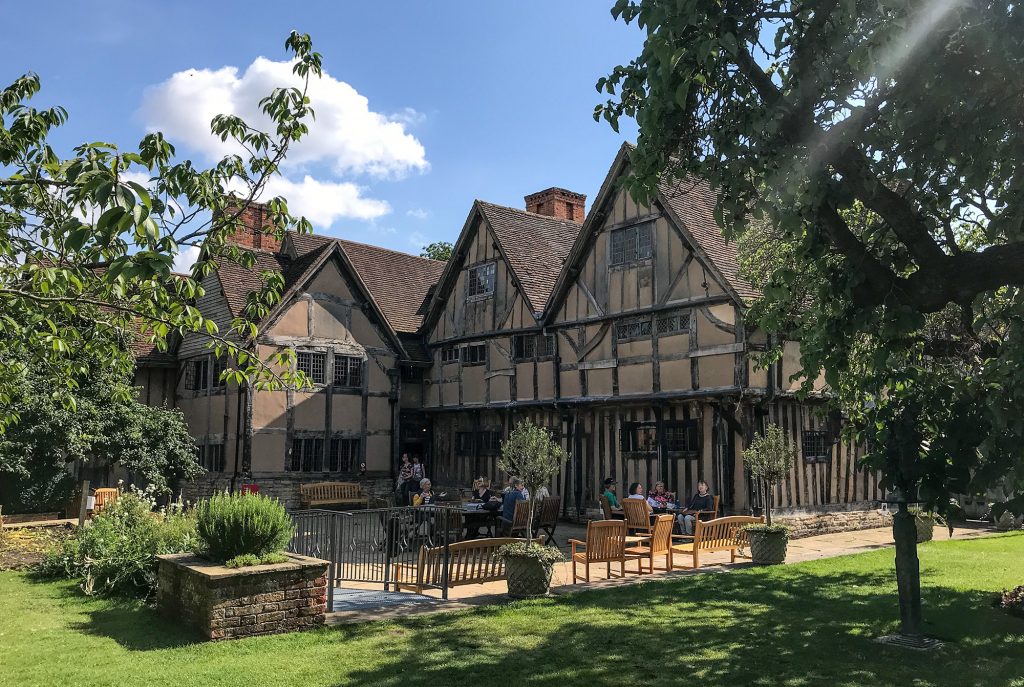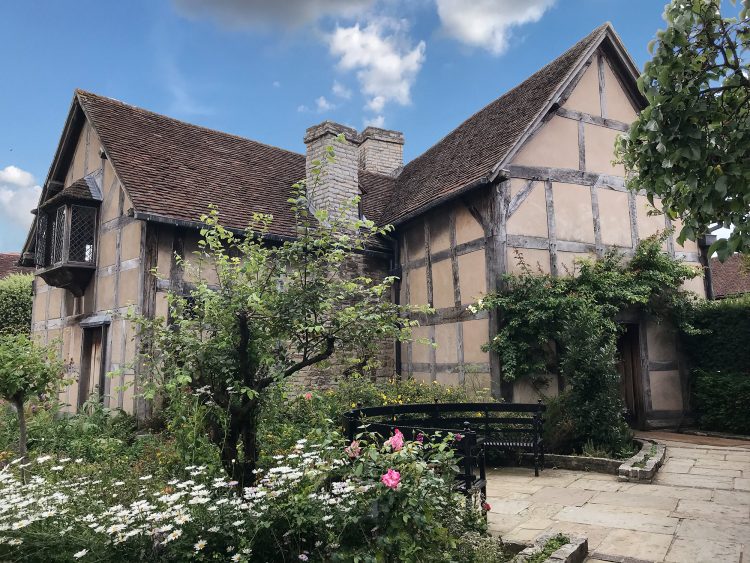The birthplace of William Shakespeare, the market town of Stratford-upon-Avon is steeped in history and culture: half-timbered buildings line the streets and medieval churches sit next to the River Avon. Baptised on 26 April 1564, Shakespeare spent much of his early life in the town. Here, he was introduced to the works of classical writers at the King’s New School, including Ovid and Cicero. Aged eighteen, he married his wife Anne Hathaway and they had three children, daughter Susanna (christened 1583) and twins Hamnet and Judith (born 1585).
In the years following the birth of his children, much of Shakespeare’s life remains a mystery. This period, spanning from 1585 to 1592 is referred to as the ‘lost years.’ It was around this time that Shakespeare left Stratford for London, and turned his hand to acting. In 1594, he became a founding member, actor and playwright of the company, the Lord Chamberlain’s Men – later known as the King’s Men under King James I of England. But, despite his theatrical commitments in London, Shakespeare didn’t leave his hometown behind completely, and is thought to have commuted regularly between the two areas.
Today remembered as one of Britain’s greatest writers, Shakespeare wrote at least 37 plays during his lifetime. These range from the comedic, such as The Two Gentleman of Verona (1590-91) to the tragic, such as King Lear (1605-6). He was also a talented poet, and composed 154 sonnets, as well as two narrative works, Venus and Adonis and The Rape of Lucrece. More than 400 years after his death, Shakespeare’s legacy continues to draw visitors to Stratford. Here, discover some of the sites associated with the bard.

Shakespeare’s Birthplace
Filled with ancient beams and creaking floorboards, this Tudor building was where Shakespeare spent his childhood and early years. Born to parents John and Mary Shakespeare (nee Arden), Shakespeare was the third of eight children, although his elder siblings did not survive childhood. His father was a glove maker by trade, and later became the town bailiff, while his mother came from a prestigious farming family.

Today, visitors to the house can wander through the room where Shakespeare and his siblings are believed to have been born (complete with a four-poster bed and wattle and daub panelling), and explore John Shakespeare’s workshop. Other highlights include the signed 17th century window in the girls’ bedroom, which contains autographs of historical visitors, such as the writer Sir Walter Scott, actress Ellen Terry and the Scottish thinker Thomas Carlyle. In the gardens, plants connected with Shakespeare’s works and characters can be seen, and resident actors perform extracts from his plays. The neighbouring Shakespeare Centre contains an array of artefacts associated with Shakespeare’s life and works, from a copy of his First Folio to memorabilia from David Garrick’s Shakespeare Jubilee of 1769.
Shakespeare’s Birthplace, The Shakespeare Centre, Henley Street, Stratford-upon-Avon, Warwickshire CV37 6QW. Open daily. For more information about opening hours and ticket costs, click here.
Shakespeare’s Birthplace is run by the Shakespeare Birthplace Trust. To enjoy twelve months of unlimited entry to all the charity’s properties (Shakespeare’s Birthplace, Mary Arden’s Farm, Anne Hathaway’s Cottage, Shakespeare’s New Place and Hall’s Croft), click here to purchase an annual pass.

Holy Trinity Church, Stratford-upon-Avon
Nestled on the banks of the River Avon, this 13th century building was where Shakespeare was baptised and buried. His grave, and the tombs of his wife and family, can be found in the chancel. Shakespeare’s status as a lay rector of the parish allowed him to be buried in this prominent position, located just below the altar. This part of the church also contains the medieval font where Shakespeare was baptised, as well as a memorial bust, erected by his wife and friends in 1623.

Holy Trinity Church, Old Town, Stratford-upon-Avon, CV37 6BG. Open daily. The church asks for a voluntary donation of £4 per adult to visit Shakespeare’s grave. For more information about opening hours, service times and donations for concessions, children and families, click here.

Shakespeare’s New Place
In 1597, Shakespeare bought New Place, where he lived with his family until his death in 1616. Here, Shakespeare is believed to have written his later plays, including The Tempest. While Shakespeare’s original home was demolished in 1759, this re-imagined site celebrates his legacy. Sculptures inspired by the bard fill the grounds, and an exhibition centre offers an insight into his domestic life. Visitors can also explore the Great Garden, the largest surviving part of Shakespeare’s estate and see the mulberry tree – believed to be grown from a cutting that Shakespeare planted. The site also contains a knot garden and a yew walk.
Shakespeare’s New Place, 22 Chapel Street, Stratford-upon-Avon, Warwickshire, CV37 6EP. Open daily. For more information about opening hours and ticket costs, click here.

Hall’s Croft
Set in grounds filled with roses and herbaceous borders, Hall’s Croft was the home of Shakespeare’s daughter Susanna, and her husband, physician Dr John Hall. Here, John ran his practice and apothecary shop. His casebooks – later published as Hall’s Select Observations on English Bodies by surgeon James Cooke in 1657 – reveal the treatments he administered for the ailments of Susanna and their daughter Elizabeth. It is thought that Hall would have tended to Shakespeare during his final illness. Upon his death, Shakespeare left John and Susanna much of his estate – including New Place – and made them the executors of his will.

Hall’s Croft, Old Town, Stratford-upon-Avon, Warwickshire, CV37 6BG. Open daily. For more information about opening hours and ticket costs, click here.


One thought on “Exploring Shakespeare’s Stratford-upon-Avon”